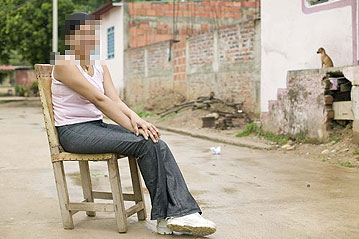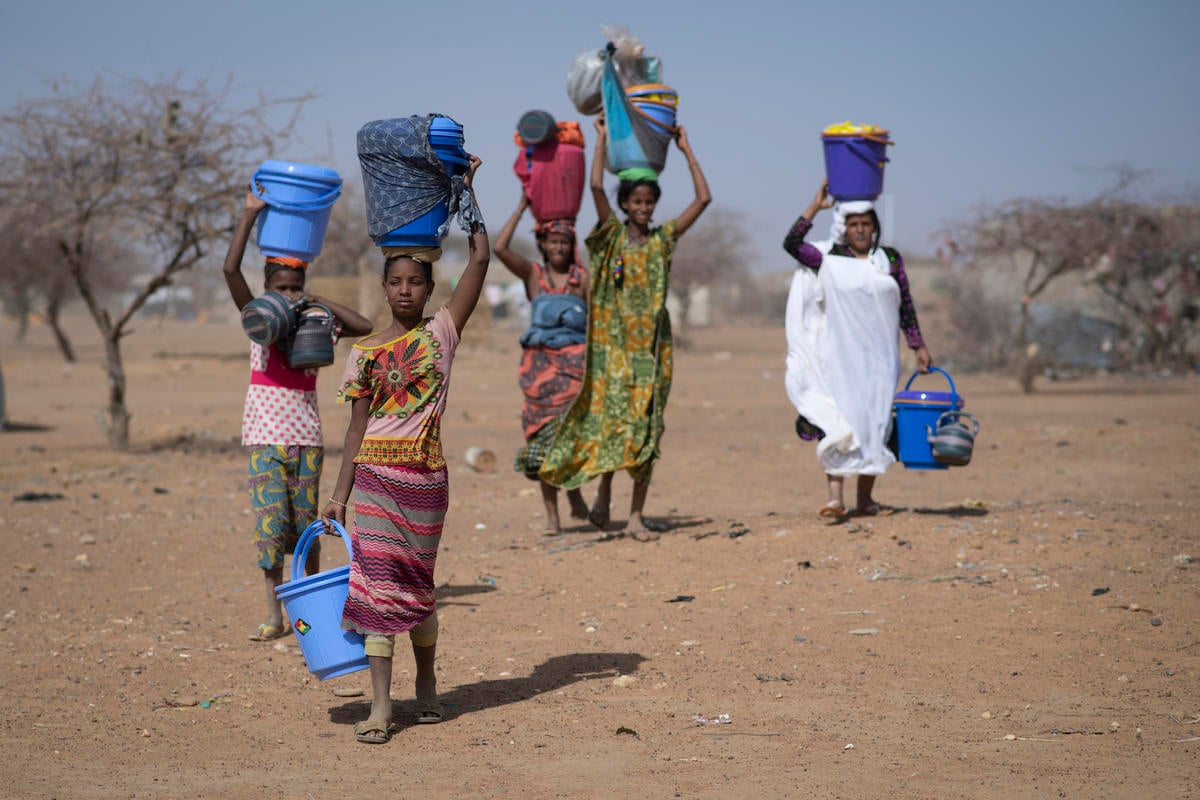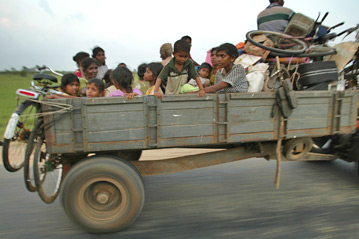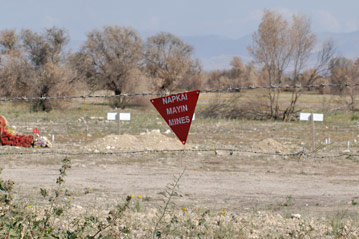Mine Awareness Day: Mines kill hundreds each year in Colombia and contribute to displacement
Mine Awareness Day: Mines kill hundreds each year in Colombia and contribute to displacement

BOGOTA, Colombia, April 4 (UNHCR) - Fifteen-year-old Marta* bears the physical and emotional scars of a life surrounded by violence in the remote Catatumbo region of eastern Colombia. She has seen her neighbours murdered, been forced to flee her home and, two years ago, lost her right leg at the knee.
As the world marks today's International Day for Mine Awareness and Assistance in Mine Action, she could be forgiven for thinking that it is too late for her - and the hundreds of other Colombians who fall victim to landmines and other unexploded munitions each year.
Government figures showed that in 2005 about three people a day were victims of landmine explosions, compared to two a day in 2004. And 258 of the 1,100 reported casualties - 40 percent of them civilians, including children - died of their injuries, which gave Colombia one of the highest mine casualty rates in the world. And the indiscriminate use of landmines has contributed to displacement.
Marta, who turns 16 this month, probably thought it could never happen to her even though she grew up with violence in the town of La Gabarra. Rival irregular armed groups perpetrated a series of massacres against the civilian population throughout the 1990s. Aged nine, Marta saw the neighbours murdered.
Then her mother received death threats and the adults decided it was time to leave. "I couldn't understand what was happening," Marta says. "All night on the bus, I asked my mother: why do we have to go, why can we not stay at home? I was sad because she would not let me take my favourite dress, it was dirty and there was no time to wash it."
The family joined one of Marta's uncles on his farm in a village to the south of La Gabarra. They thought they were safe, unaware of the deadly menace that lurked beneath the ground.
On a June morning in 2005, Marta's mother sent her to the village to sell some eggs and milk from the farm. She stepped of the main road and was walking in a field when her world suddenly erupted in a huge explosion.
"I looked down and saw that my foot was covered in blood. The toes were missing. I still had the eggs in my hand, they were not broken," Marta recalled. "I started to laugh about that: it won't matter now that I didn't sell the eggs, I told myself. I was still standing up, and laughing."
She walked back to the road to seek help, the shock numbing her pain. "I was laughing and praying at the same time: please God, I prayed, I don't want to die. Look at me, I am young, I want to have a husband and a family, please don't let me die." Doctors at a local health centre stopped the bleeding, but they could not save her lower right leg.
Marta was fortunate; many landmine casualties are never reported because they are maimed or killed in remote areas of the country torn by conflict and with little access to emergency health and other state services.
The Colombian government has signed and ratified the 1997 Ottawa Convention, which forbids the use and production of anti-personnel landmines. But while the armed forces are believed to have stopped using mines for several years, some of Colombia's irregular armed groups continue to lay them in combat zones.
And the indiscriminate use of landmines has contributed to people fleeing from their homes in Colombia, which with more than 3 million internally displaced people has one of the highest populations of concern to the UNHCR.
A recent report by the refugee agency showed that 70 percent of all forced displacements in Colombia between 2004 and last year came in 180 municipalities, or about 17 percent of all Colombian municipalities. An estimated seventy-three percent of all landmines had been laid in these 180 municipalities, which were characterised by a high incidence of fighting, a heavy presence of irregular armed groups and the cultivation of coca crops for cocaine.
Meanwhile, Marta and her family now live in a city where she can receive treatment. The loss of her leg and outside pressure persuaded the family that it was no longer safe in her uncle's village. "My brother was scared, he didn't want to join any of the [illegal armed groups] groups. Even my sister and I had been told we would have to join when we got to be 16."
Marta, who wears a lower leg prosthesis, has been helped by the Colombian Rehabilitation Centre for mine victims. She has also received psychological help and is starting to plan for the future again. She wants to go to university and become a doctor.
* Name changed for protection reasons.
By Marie-Hélène Verney in Bogota
and Fernando Santacruz in Cúcuta, Colombia








